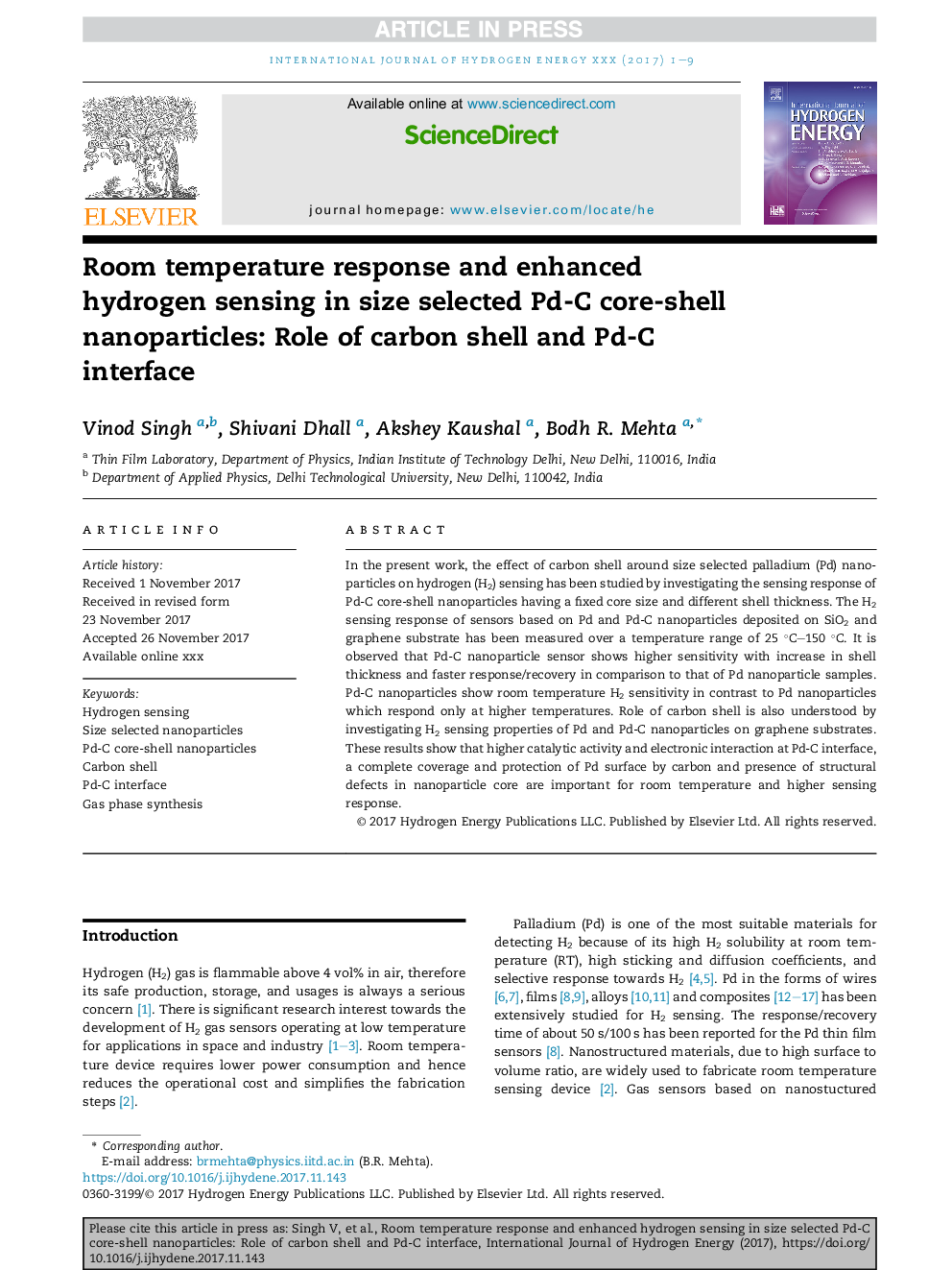| Article ID | Journal | Published Year | Pages | File Type |
|---|---|---|---|---|
| 7708803 | International Journal of Hydrogen Energy | 2018 | 9 Pages |
Abstract
In the present work, the effect of carbon shell around size selected palladium (Pd) nanoparticles on hydrogen (H2) sensing has been studied by investigating the sensing response of Pd-C core-shell nanoparticles having a fixed core size and different shell thickness. The H2 sensing response of sensors based on Pd and Pd-C nanoparticles deposited on SiO2 and graphene substrate has been measured over a temperature range of 25 °C-150 °C. It is observed that Pd-C nanoparticle sensor shows higher sensitivity with increase in shell thickness and faster response/recovery in comparison to that of Pd nanoparticle samples. Pd-C nanoparticles show room temperature H2 sensitivity in contrast to Pd nanoparticles which respond only at higher temperatures. Role of carbon shell is also understood by investigating H2 sensing properties of Pd and Pd-C nanoparticles on graphene substrates. These results show that higher catalytic activity and electronic interaction at Pd-C interface, a complete coverage and protection of Pd surface by carbon and presence of structural defects in nanoparticle core are important for room temperature and higher sensing response.
Related Topics
Physical Sciences and Engineering
Chemistry
Electrochemistry
Authors
Vinod Singh, Shivani Dhall, Akshey Kaushal, Bodh R. Mehta,
